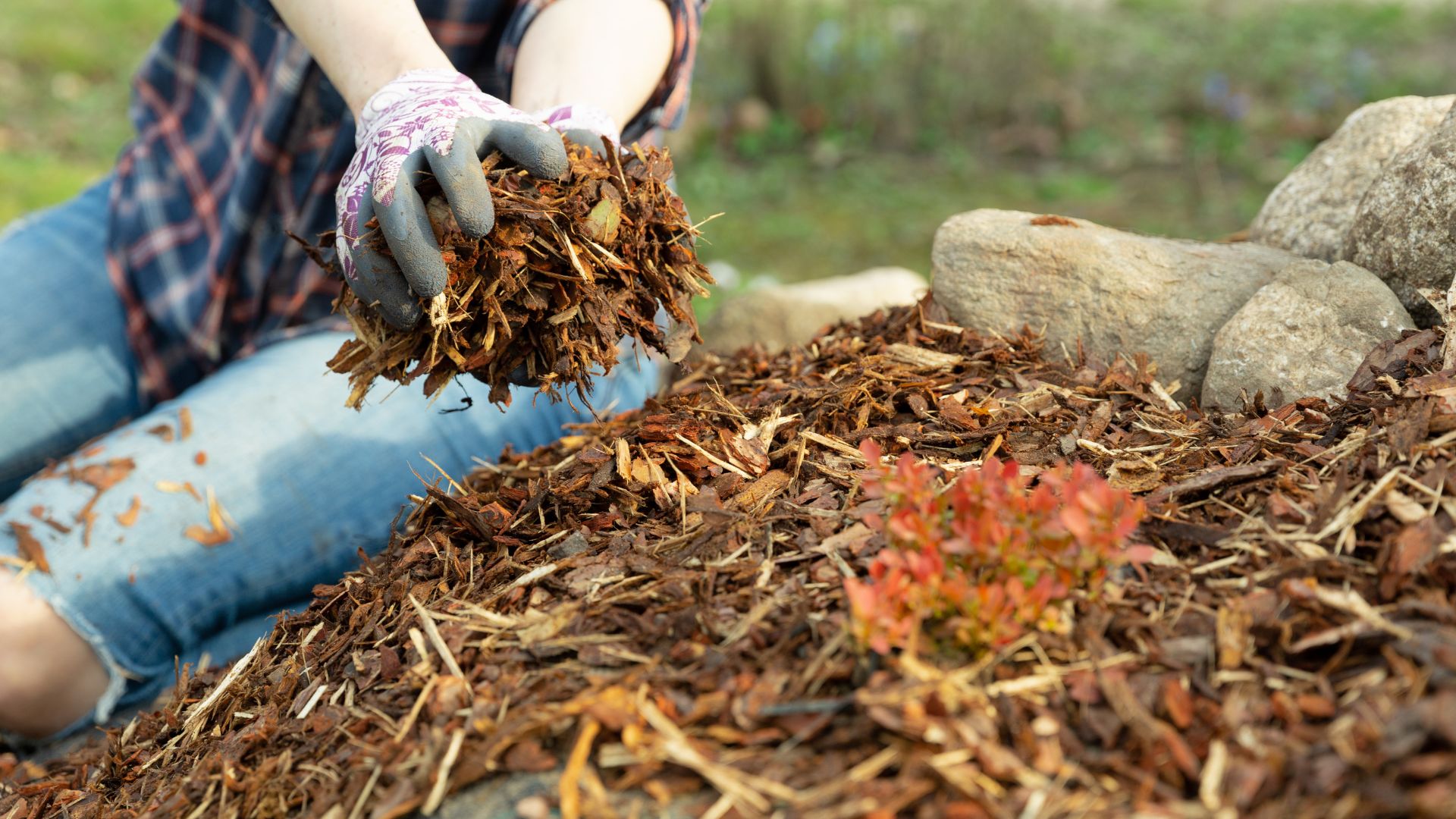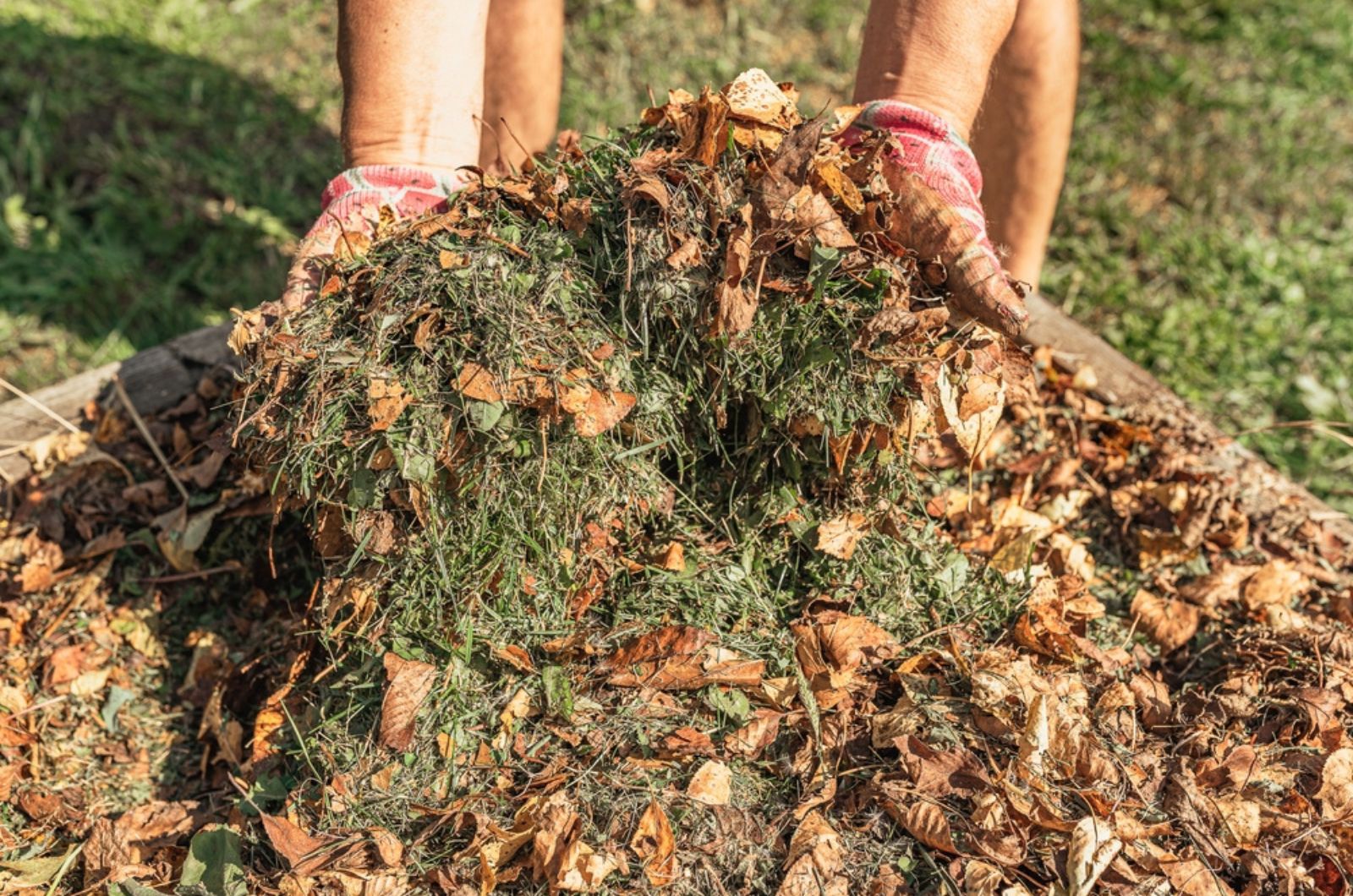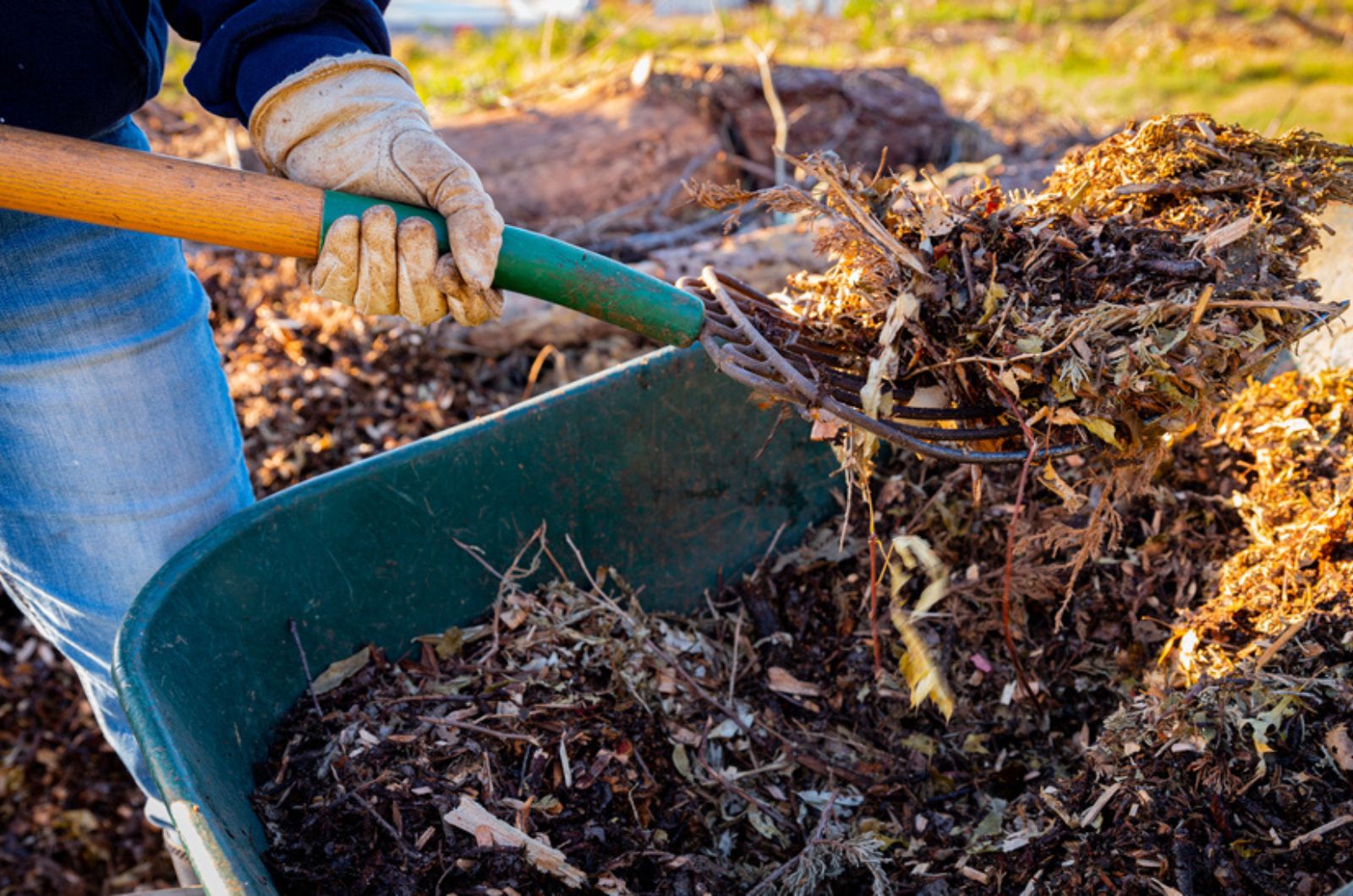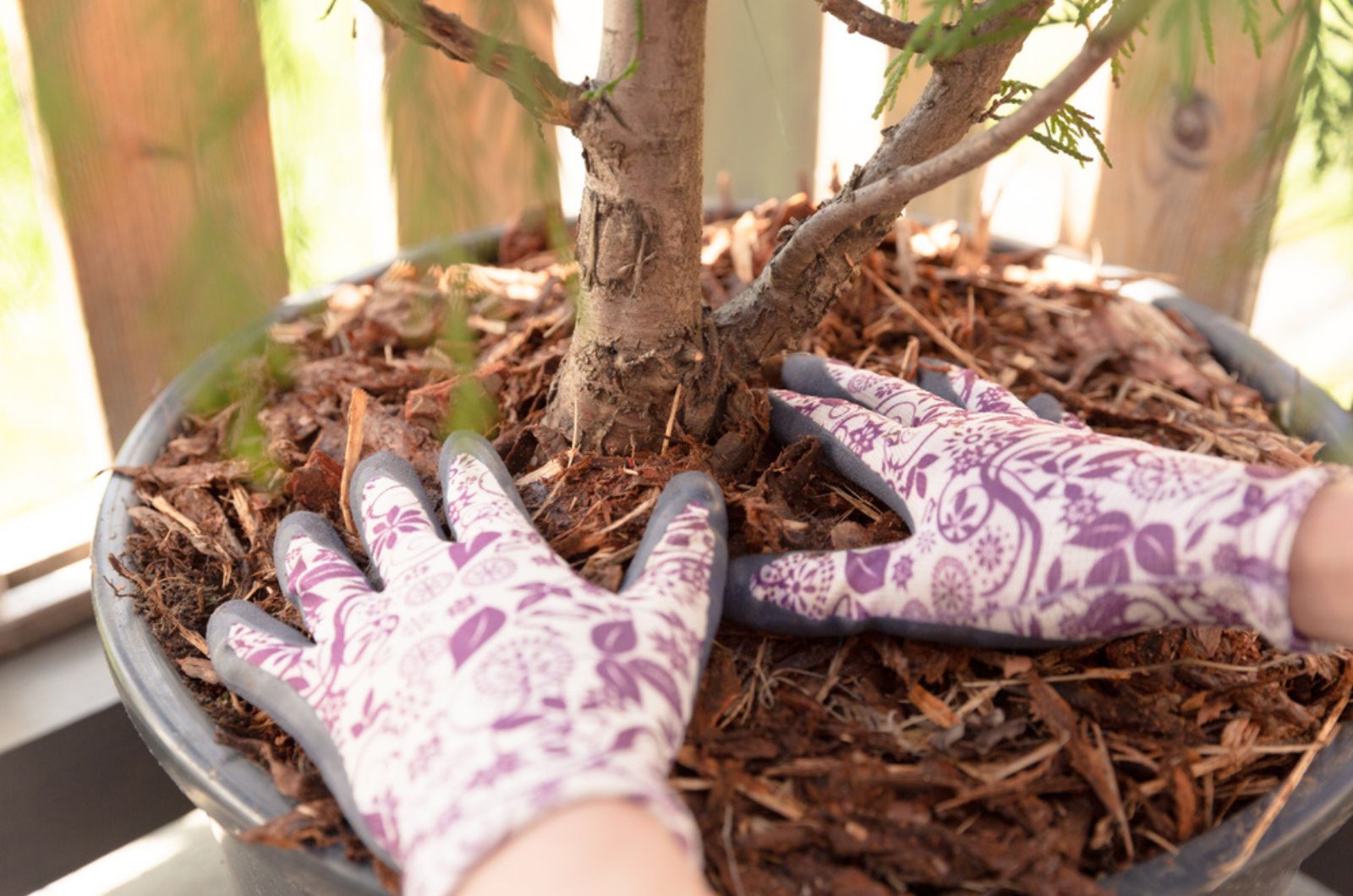Leaf mulch may not be glamorous, but its effects on the soil are off the charts. It makes the soil more fertile, helps sandy substrates retain more water, and much more.
So why not utilize all those leaves that are currently falling in your yard?
And the best part about it is that you don’t have to wait for months for it to decompose just to use it. Collect the leaves and mulch your plants with them for numerous benefits.
Here’s the lowdown!
What Is Leaf Mulch?
Leaf mulch is fallen and dry leaves you use to mulch your plants. Of course, it includes some other vegetative materials that come from trees, shrubs, and your other plants.
Since it’s organic, soil microbes and earthworms decompose it and take it deeper underground where its nutrients help plants thrive.
Pound for pound, it is better than any product currently on the market, and can enrich your soil with potassium, calcium, and magnesium. (1)
Of course, we usually don’t have that much leaf mulch, but even a little bit can go a long way for your plants.
How It Helps
There are many advantages of leaf mulch, and not just for your garden.
• Leaf mulch can suppress weed growth by blocking out the sunlight which weed seeds need to germinate.
• It keeps the earthworms safe by providing them food and shelter.
• Leaf mulch will improve the soil texture after it decomposes, making the sandy soils more moisture-retentive and clay soils more draining.
• Since mulch has the ability to make the moisture from the soil evaporate more slowly, you won’t have to irrigate your plants that frequently, reducing your water bill.
• Leaf mulch will enrich the soil with nutrients, reducing the need for artificial fertilizers.
• This material saves you money as you don’t have to buy nearly as much fertilizer and other soil amendments.
How To Make Leaf Mulch
Making this soil amendment depends on what you’re planning to use it on. You can leave it intact or shred it into tiny pieces to help it decompose faster.
For instance, a lot of large trees and shrubs, especially deciduous ones, can handle plenty of leaf mulch because they evolved in similar conditions. Look at the forests; the trees thrive there.
However, these intact leaves take longer to decompose, which can keep oxygen away from the plants’ roots, especially if the layer is way too thick. It can also make watering more difficult since you will have to remove mulch to make sure moisture reaches the roots.
Also, deciduous leaves decompose much faster than pine needles and other evergreen foliage. But even they can block out oxygen and water for too long, or keep the soil moist for too long in some cases.
Therefore, shredding the leaves would be your best bet, or you can even compost them. Just look for the signs that can help you harvest leaf mold and you’ll get ready made black gold that’s ready to use.
But if you want to use uncomposted leaf mulch, here’s how to prepare it for different uses!
For Lawns
Shred the leaves with your shredder or mulching mower and sprinkle a thin layer of it on your lawn.
Don’t let it be thicker than 1-2 inches and allow the grass to show through the mulch.
For Vegetable Plots And Perennial Beds
In this case, you don’t have to shred the leaves into tiny pieces like for lawns, and you can use clippers, mower, or a shredding machine if you have it.
Spread a 2-3 inch thick layer of mulch around your plants, but make sure to leave a couple of inches around the stems free from mulch. This will prevent rotting and allow you to irrigate your plants more easily.
For Trees And Shrubs
Simply leave the foliage where it falls or gather it from other parts of your garden and lay it under your trees and shrubs.
You can make the mulch layer 3-6 inches thick, depending on how many leaves you have.
Just make sure to leave a couple of inches around the trunk free from mulch because it can cause it to rot.
Uses For Leaf Mulch
If you still have some extra leaves even after mulching your lawn, veggies and flower beds, and trees, here are some other ways you can use it.
• Mulch any area without plants to suppress weed growth.
• Use leaf mulch for your potted trees, shrubs, and flowers.
• Add leaf mulch to your compost heap or use it to enrich your vermicompost.
• Use it to insulate young and frost-tender trees by wrapping them in mesh wire and filling it with leaf mulch.
• Store the leaf mulch in large buckets to use them the following year.
References:
1. Dillion, D. (2021). Leaf Mulch – Free Soil Amendment for Your Lawn & Garden. NCSU Cooperative Extension.




